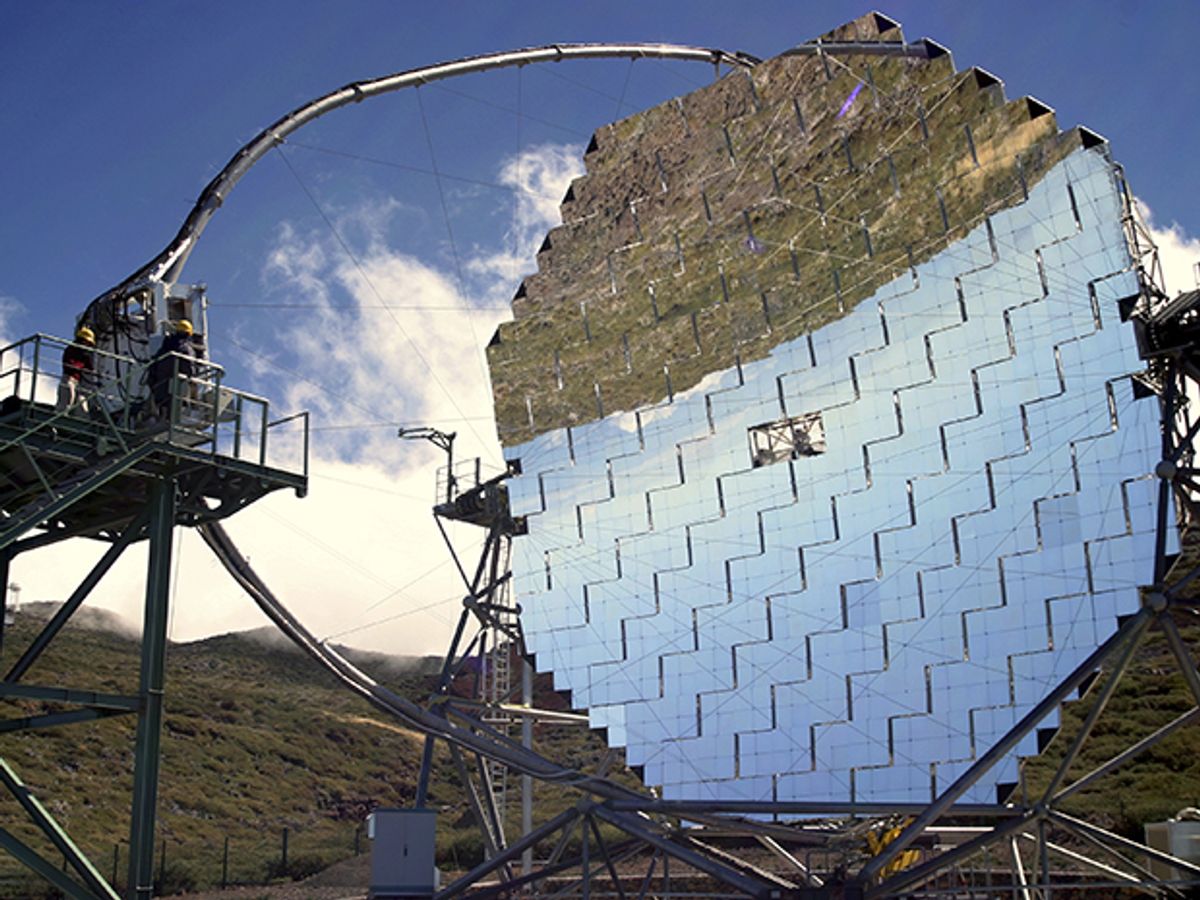How do you peer into the hidden heart of a volcano? Use a leading-edge telescope designed to track quasars and supernovae.
The next-generation Imaging Atmospheric Cherenkov Telescope, now under construction in Serra La Nave near Mount Etna in Sicily, is designed to track the highest of high-energy celestial events—objects spitting out cosmic gamma radiation, high-frequency photons with energies from 1 teraelectronvolt to 100 TeV. (100 TeV is 1014 electron-volts; compare that to the 5 x 103 to 150 x 103 eV of a medical X-ray.)
When these power-packed photons slam into an atom in the Earth’s atmosphere, they dissolve in a shower of particles, including high-energy muons. These particles have the charge and spin of an electron, but about 200 times the mass. They interact weakly with matter, can penetrate hundreds of meters of solid rock, and are born moving at 100 percent of the speed of light in a vacuum.
They do react with earthly matter a bit, though. Scientists can learn a good deal about the material they pass through by analyzing how many muons are absorbed during their hidden journey.
This isn’t a new idea. Scientists first used muon detectors to gauge rock thicknesses (measuring the thickness of stone above an Australian mine shaft) in the 1950s and to image cavities in stone (to search for hidden chambers in the pyramids) in the 1960s. Today, improved direct muon detectors are used to monitor the innards of the reactors at Fukushima and to find sealed contraband, including nuclear materials, in shipping containers entering busy ports.
The images these methods produce, however, have more in common with computer-aided tomography than a photograph. They require arrays of double-layer detectors to track the energy and direction of individual particles, and feed the data into computers to reconstruct an image of the underlying structure.
The new telescopes take a different approach. They capture the blue glow of Cherenkov radiation, the electromagnetic “sonic boom” created by a charged particle moving through a dielectric medium faster than the speed of light in that medium. The speed of light in air is about 90 km/s slower than it is in a vaccuum, so cosmic-ray muons leave a blue wake as they pass.
The new ASTRI SST-2M telescope thus has a lot in common with a Newtonian double reflector telescope, using two sets of precisely curved mirrors to focus the Cherenkov light into a camera, creating an image.
The design team at the Istituto Nazionale di Astrofisica (INAF, the Italian National Institute for Astrophysics) realized that their instrument could be used for geological as well as astrophysical research. In research scheduled to appear in the 21 January 2016 journal Spectrometers, Detectors and Associated Equipment (available now at arXiv), Osvaldo Catalano and colleagues at INAF show how to lower the telescope’s sights to see through the neighboring Mount Etna, resolving its inner structure faster and more clearly than other muon-detector-based instruments. They calculate that the new instrument will yield a 10-fold improvement in sensitivity, allowing them, for example, to see a 200-meter-wide gas-filled void or a rising column of magma deep in the bowels of the storied volcano.
Douglas McCormick is a freelance science writer and recovering entrepreneur. He has been chief editor of Nature Biotechnology, Pharmaceutical Technology, and Biotechniques.



